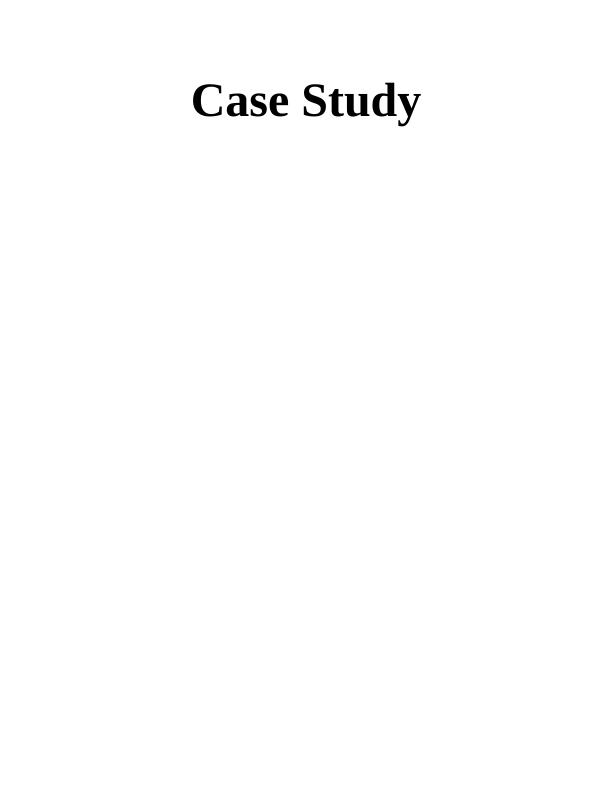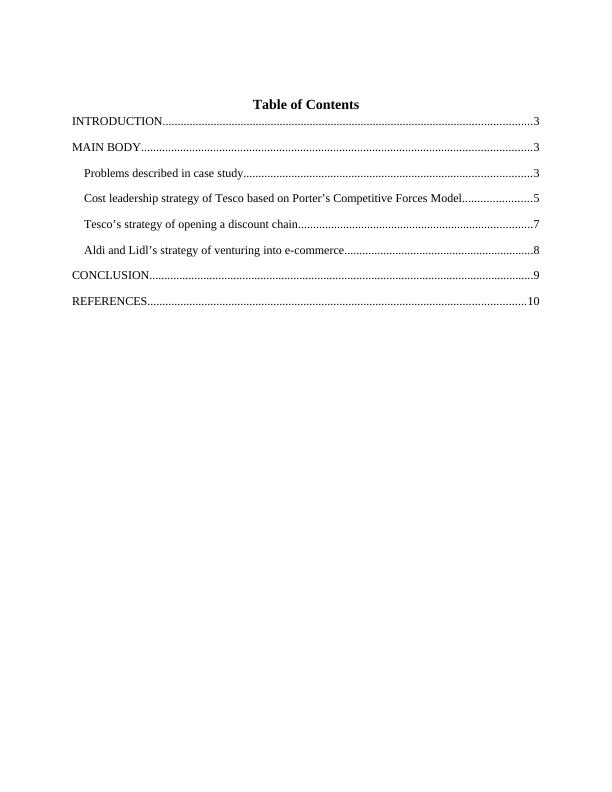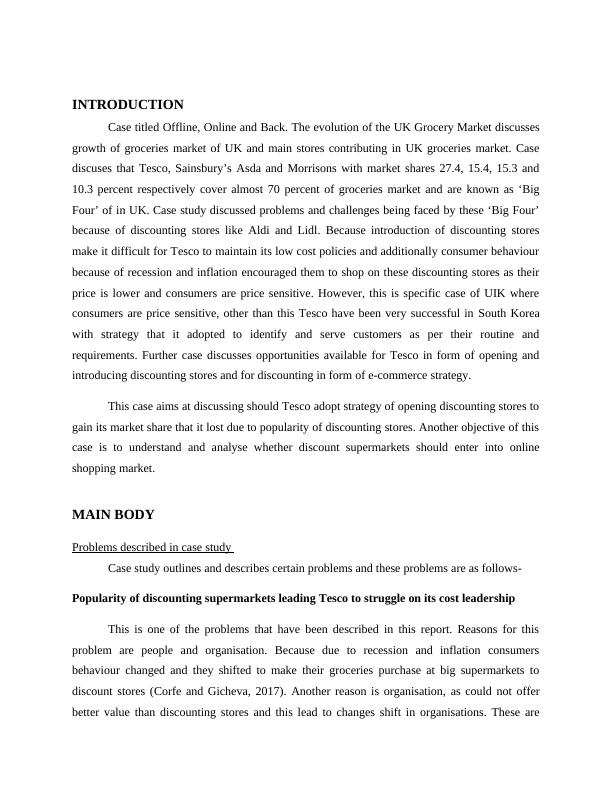Case Study: Offline, Online and Back - The Evolution of the UK Grocery Market
Added on 2023-01-04
10 Pages3223 Words83 Views
Case Study

Table of Contents
INTRODUCTION...........................................................................................................................3
MAIN BODY..................................................................................................................................3
Problems described in case study................................................................................................3
Cost leadership strategy of Tesco based on Porter’s Competitive Forces Model.......................5
Tesco’s strategy of opening a discount chain..............................................................................7
Aldi and Lidl’s strategy of venturing into e-commerce...............................................................8
CONCLUSION................................................................................................................................9
REFERENCES..............................................................................................................................10
INTRODUCTION...........................................................................................................................3
MAIN BODY..................................................................................................................................3
Problems described in case study................................................................................................3
Cost leadership strategy of Tesco based on Porter’s Competitive Forces Model.......................5
Tesco’s strategy of opening a discount chain..............................................................................7
Aldi and Lidl’s strategy of venturing into e-commerce...............................................................8
CONCLUSION................................................................................................................................9
REFERENCES..............................................................................................................................10

INTRODUCTION
Case titled Offline, Online and Back. The evolution of the UK Grocery Market discusses
growth of groceries market of UK and main stores contributing in UK groceries market. Case
discuses that Tesco, Sainsbury’s Asda and Morrisons with market shares 27.4, 15.4, 15.3 and
10.3 percent respectively cover almost 70 percent of groceries market and are known as ‘Big
Four’ of in UK. Case study discussed problems and challenges being faced by these ‘Big Four’
because of discounting stores like Aldi and Lidl. Because introduction of discounting stores
make it difficult for Tesco to maintain its low cost policies and additionally consumer behaviour
because of recession and inflation encouraged them to shop on these discounting stores as their
price is lower and consumers are price sensitive. However, this is specific case of UIK where
consumers are price sensitive, other than this Tesco have been very successful in South Korea
with strategy that it adopted to identify and serve customers as per their routine and
requirements. Further case discusses opportunities available for Tesco in form of opening and
introducing discounting stores and for discounting in form of e-commerce strategy.
This case aims at discussing should Tesco adopt strategy of opening discounting stores to
gain its market share that it lost due to popularity of discounting stores. Another objective of this
case is to understand and analyse whether discount supermarkets should enter into online
shopping market.
MAIN BODY
Problems described in case study
Case study outlines and describes certain problems and these problems are as follows-
Popularity of discounting supermarkets leading Tesco to struggle on its cost leadership
This is one of the problems that have been described in this report. Reasons for this
problem are people and organisation. Because due to recession and inflation consumers
behaviour changed and they shifted to make their groceries purchase at big supermarkets to
discount stores (Corfe and Gicheva, 2017). Another reason is organisation, as could not offer
better value than discounting stores and this lead to changes shift in organisations. These are
Case titled Offline, Online and Back. The evolution of the UK Grocery Market discusses
growth of groceries market of UK and main stores contributing in UK groceries market. Case
discuses that Tesco, Sainsbury’s Asda and Morrisons with market shares 27.4, 15.4, 15.3 and
10.3 percent respectively cover almost 70 percent of groceries market and are known as ‘Big
Four’ of in UK. Case study discussed problems and challenges being faced by these ‘Big Four’
because of discounting stores like Aldi and Lidl. Because introduction of discounting stores
make it difficult for Tesco to maintain its low cost policies and additionally consumer behaviour
because of recession and inflation encouraged them to shop on these discounting stores as their
price is lower and consumers are price sensitive. However, this is specific case of UIK where
consumers are price sensitive, other than this Tesco have been very successful in South Korea
with strategy that it adopted to identify and serve customers as per their routine and
requirements. Further case discusses opportunities available for Tesco in form of opening and
introducing discounting stores and for discounting in form of e-commerce strategy.
This case aims at discussing should Tesco adopt strategy of opening discounting stores to
gain its market share that it lost due to popularity of discounting stores. Another objective of this
case is to understand and analyse whether discount supermarkets should enter into online
shopping market.
MAIN BODY
Problems described in case study
Case study outlines and describes certain problems and these problems are as follows-
Popularity of discounting supermarkets leading Tesco to struggle on its cost leadership
This is one of the problems that have been described in this report. Reasons for this
problem are people and organisation. Because due to recession and inflation consumers
behaviour changed and they shifted to make their groceries purchase at big supermarkets to
discount stores (Corfe and Gicheva, 2017). Another reason is organisation, as could not offer
better value than discounting stores and this lead to changes shift in organisations. These are

End of preview
Want to access all the pages? Upload your documents or become a member.
Related Documents
Analysis of Tesco's Cost Leadership Strategy and Market Positionlg...
|10
|3240
|81
“LIDL” Industry Marketing Reportlg...
|22
|6469
|640
Report on Research UK Grocery and Retail Marketlg...
|22
|6181
|89
Improving Market Strategies for Tescolg...
|13
|727
|87
Supermarket Trendslg...
|14
|948
|89
Introduction of Marketing of Retail Sector - Reportlg...
|21
|6569
|430
